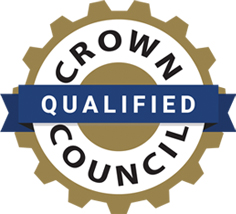Expert Tooth Extractions by Dr. Elena Tomasi, DMD – Southbury, CT Dentist
When is a Tooth Extraction Necessary?
Tooth extraction is a viable solution when a tooth is damaged, decayed, or infected beyond repair. When a tooth is damaged beyond repair, it can cause teeth misalignment, jaw pain, and discomfort. If a tooth is decayed or infected beyond repair, the infection can spread to the whole body and cause a general health concern.
Here are the typical scenarios when a dental extraction is a possible solution.
Severe Damage from an Accident
A dentist’s goal is always to preserve the tooth. A dental crown or filling can help restore a chipped or cracked tooth. However, if the damage is extensive, keeping the tooth may not be possible with an added infection risk. Therefore, your dentist may recommend a tooth extraction.
It is normal for hearing the option of tooth extraction to cause a degree of anxiety. Here at Dr. Tomasi’s practice, we prioritize your safety, comfort, and self-esteem in having restored white teeth.
Severe Tooth Decay from Irreparable Tooth Damage
When tooth decay reaches the pulp, or the tooth’s center, the bacteria from the decay can take over the pulp and cause an infection. While a root canal procedure can remove the infection before it spreads, a severe infection may call for a tooth removal.
At our practice, your dentist will examine the extent of tooth decay and offer the most viable solution. Whether it’s root canal treatment or tooth extractions, we ensure the treatment is as safe, painless, and comfortable as possible for your dental needs.
Overcrowding Teeth and Impacted Tooth
An impacted tooth such as a wisdom tooth blocked from emerging from the gums or bone due to teeth overcrowding. When impacted, the wisdom tooth can grow at the wrong angle, which causes cysts, damage, and pain. Because impacted teeth are harder to clean, it can even cause problems in the teeth and gums.
Here at our Southbury practice, we will thoroughly examine your teeth to determine the best treatments for you. We use digital radiography to see the impacted tooth and its affected areas. Digital radiography is fast and comfortable since the images can be transferred to a monitor where we have a visual representation of your teeth. It is also safer since it emits 75% less radiation.
Upon medically reviewing the x-ray, your dentist can evaluate if there is space to move and set your teeth to a better alignment. If not, tooth extractions can prevent overcrowding and avoid damaging other teeth and causing infection.
Periodontal Disease
Periodontal disease is caused by dental plaque that builds up on the teeth hours after eating without brushing (this is why oral health is essential). Dental plaque bacteria cause inflammation and infection.
At our practice, we aim to save your teeth in the best way possible with the best periodontal treatment for your case.
What are the Benefits and Risks of Tooth Extraction?
Your dentist may recommend tooth extraction for the above reasons. While the procedure resolves an individual’s signs and symptoms, it also has risks, like all dental procedures.
Benefits of Tooth Extraction
- Pain relief
- Less chance of problems caused by wisdom teeth
- Removal of infection source
- Create space for braces
- Get a stronger and visually appealing smile with dental implants
Risks of Tooth Extraction
- Failure of blood to clot after extraction or dry socket
- Infection
- Nerve damage
- Fractures from tools used
- Damage to other teeth
- Bruising and swelling in the gum area
- Discomfort and pain from the injection site
- Incomplete recovery from pain or ache
- Drug reaction
- Slow recovery
We minimize risks by interviewing individuals and knowing their relevant medical history. If a patient has any of the above risks, we mitigate them by customizing their case’s dental and medical plans.
How to Prepare for a Tooth Extraction
After a thorough dental examination and testing, your dentist may recommend tooth extraction for the above reasons. While anyone can have varying degrees of dental anxiety when anticipating their tooth extraction appointment, here are preparations you can make for a more comfortable experience.
- Share your Complete Medical History
- Pain Medications
- Ask Away
- Arrange Your Transportation and the Day After
- No Eating Before the Procedure
- Wear Comfortable Clothes
What to Expect in a Tooth Extraction Procedure
Dental extraction can be simple or complicated, depending on the individual case. Here is the general procedure for tooth removal.
Simple tooth extraction involves the following:
- Your dentist may ask you to take antibiotics first.
- Your dentist will numb the tooth area with a local anesthetic to minimize discomfort.
- Your dentist will use an elevator tooth removal tool to loosen the tooth from the gum further.
- Your dentist will grasp the tooth around its surface with forceps and pull it out from the gum.
However, some tooth extraction cases are more complicated such as wisdom teeth.
- Your dentist will sedate you to help you relax and fall asleep. They will also give you anesthesia to keep you pain-free.
- For fully or impartially impacted teeth, your dentist may cut a flap in your gum area to remove the surrounding bone to extract the tooth with forceps. If the tooth is hard to remove, it is broken into pieces and extracted.
- After the tooth extraction, the dentist will end the procedure by cleaning the gum socket and smoothing the remaining bone area, stitching the gum flaps close with sutures, and stopping bleeding by instructing you to bite down on damp gauze.
What is the Aftercare for Tooth Extraction Recovery?
Tooth extraction aftercare aims to minimize pain, prevent infection, and hasten recovery. Therefore, here are the dos and don’ts of tooth extraction aftercare.
Within 24 hours, allow a blood clot to form on the gum socket:
- Stop bleeding by biting on a gauze pad and changing it before it becomes soaked.
- Minimize swelling by applying an ice bag after the extraction for ten minutes at a time.
- Avoid drinking from a straw.
- Eat soft foods such as soup to avoid straining the extraction site.
- It is best to lie down with your head propped with pillows. Lying flat can cause the extraction site to continue bleeding.
- Continue your routine dental care but avoid the extraction site to prevent infection.
- Take your medications as needed for pain management and infection prevention.
24 hours after the procedure, avoid strenuous activity:
- Keep the gum socket clean by rinsing with a solution of 0.5 teaspoon salt and 8 ounces water.
- Have a day off for 24 hours.
- Avoid strenuous activity for the next 48 hours.
- Avoid forceful rinsing or spitting to prevent dislodging the gum socket clot.
- Continue eating soft foods and gradually have solid foods as the extraction site recovers.
Trust Dr. Elena Tomasi for Professional Tooth Extractions
By now, we have explained the tooth extraction procedure and the measures we can take to make sure your experience is free of discomfort with minimal risks. We want our patients to be comfortable, reflected by our past quality of care and patient satisfaction. If you’re near Southbury, CT, we can give you the same caliber of experience by scheduling an appointment with us today.
Tooth Extraction FAQs
Q: What are the first signs of infection after tooth extraction?
A: At the first signs of infection, we recommend contacting your dentist to remedy the said infection properly. Here are signs of infection after tooth extraction:
- Abnormal swelling
- Pus
- Pain
- Bad breath
- Clot hasn’t formed, and the bleeding won’t stop
- Fever
- Bitter taste in the mouth
- Swollen gums, neck glands or jaw
Q: How long does it take to recover from a tooth extraction?
A: Patients can return to their usual physical activity with proper care and management for the first 48-72 hours after tooth extraction. The extraction site will heal at an average of 3-4 weeks.
Q: How long will a tooth extraction take?
A: The tooth extraction procedure can take 20-40 minutes for each tooth, depending on the patient’s individual case.
Q: How painful are tooth extractions?
A: Tooth extraction is relatively painless. Aside from the anesthesia and sedation measures an individual case may require, your dentist will use tools such as forceps to acquire the tooth that causes the individual to feel pressure but not pain during the extraction.







